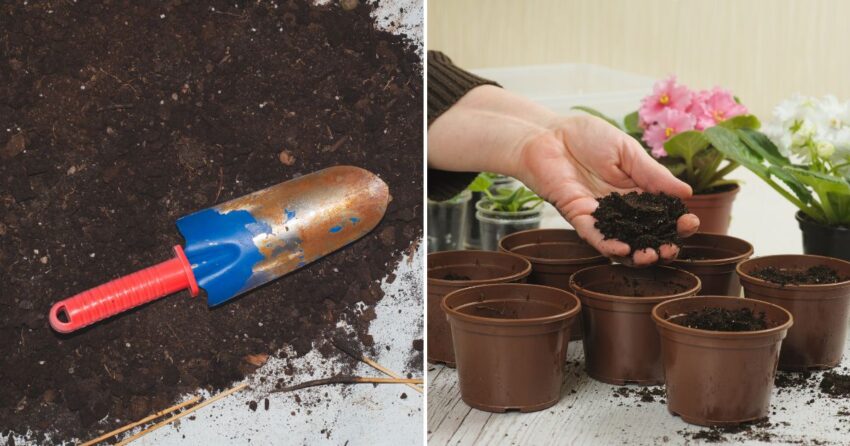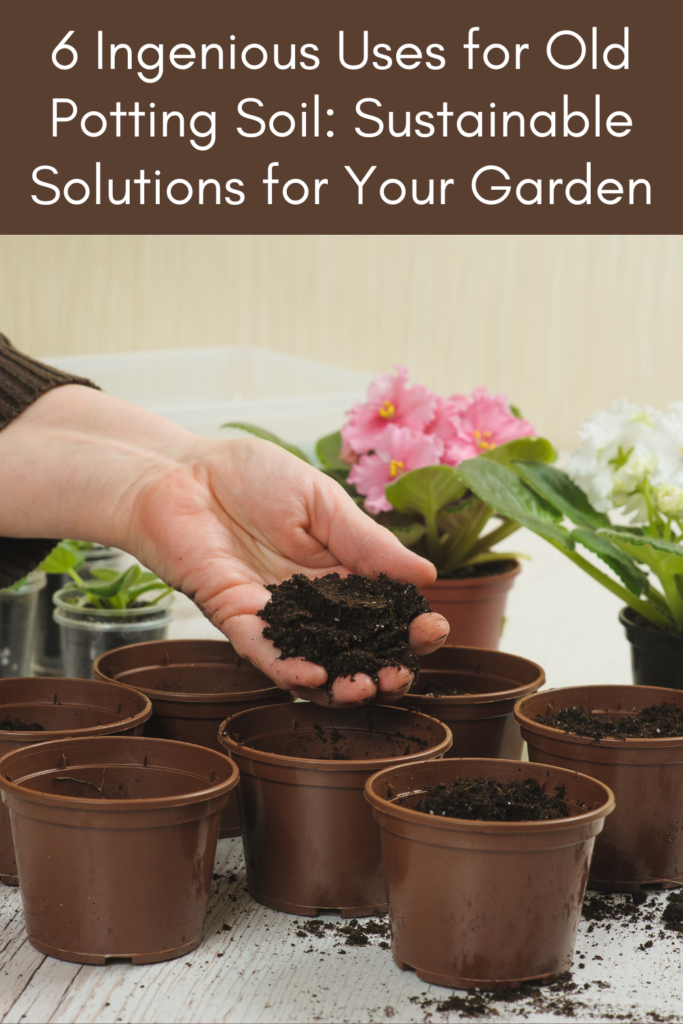Potting soil is an essential component for any gardener, providing the necessary nutrients and structure for healthy plant growth. However, after a season or two of use, potting soil can become depleted and lose its effectiveness. Instead of discarding it, consider giving your old potting soil a new lease on life by exploring these six ingenious uses. Not only will you save money and reduce waste, but you’ll also contribute to a more sustainable gardening practice. Let’s dive in!
- Soil Amendment: While the nutrient content of old potting soil may have diminished, it can still serve as an excellent soil amendment. By mixing it with fresh compost or organic matter, you can enhance its nutritional value and improve soil structure. Incorporate your old potting soil into garden beds or vegetable patches to boost their fertility. This approach is particularly useful for clay or sandy soils, as it aids in moisture retention and drainage, leading to healthier plants.
- Container Refills: One of the most obvious uses for old potting soil is to refill containers for potted plants. Although the soil may have lost some of its nutrients, it still provides a stable medium for holding plant roots. Simply remove any dead roots, loosen the soil, and mix it with fresh potting soil or compost before refilling your containers. This method is especially useful for large containers or when you have a surplus of old potting soil.
- Mulching: Mulching offers numerous benefits to your garden, such as conserving moisture, suppressing weeds, and regulating soil temperature. Instead of purchasing new mulch, repurpose your old potting soil as a cost-effective alternative. Spread a thin layer around your plants, making sure to keep it away from direct contact with the stems to prevent moisture-related issues. As the old potting soil breaks down, it will contribute to the organic matter content of your soil, further enriching it.
- Seed Starting Mix: Starting seeds indoors is a great way to get a head start on your garden. Old potting soil can be transformed into a seed starting mix by combining it with vermiculite, perlite, or coconut coir to improve drainage and aeration. This mixture provides a suitable environment for seed germination and early seedling growth. Remember to sterilize the old potting soil before use to prevent the transmission of pathogens or pests.
- Outdoor Planters and Non-Fussy Plants: If you have outdoor planters that don’t require highly nutritious soil, such as succulents, cacti, or other drought-tolerant plants, repurposing old potting soil is an excellent option. These types of plants thrive in well-draining soil with lower nutrient requirements. By using old potting soil mixed with coarse sand or perlite, you can create a suitable growing medium for these resilient plants, saving money and reducing waste.
- Landscaping Projects: When undertaking landscaping projects, such as building raised beds, filling low spots, or improving drainage, old potting soil can be a valuable resource. Its relatively lightweight nature makes it easier to handle and transport compared to dense topsoil or compost. Use the old potting soil as a base layer, incorporating it with other organic materials or topsoil as needed to achieve the desired results.
Conclusion: Don’t let your old potting soil go to waste! By repurposing it in various ways, you can extend its usefulness and contribute to a sustainable gardening practice. Whether you choose to amend garden beds, refill containers, use it as mulch, create a seed starting mix, cater to non-fussy plants, or tackle landscaping projects, old potting soil can play a crucial role. With these innovative ideas, you’ll save money, reduce waste, and give your plants the love they deserve while being environmentally conscious. Embrace the possibilities and transform your gardening practices today!


